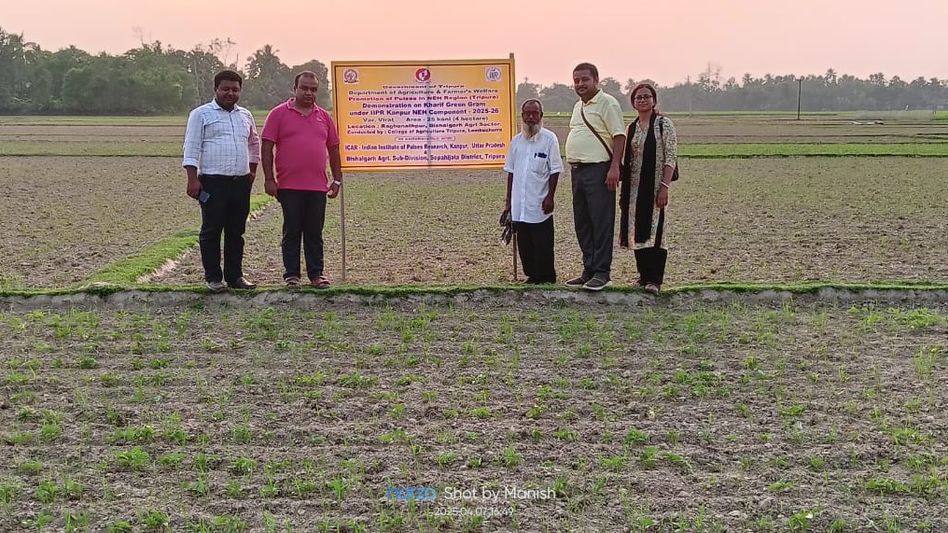Tripura farmers turn single-crop fields into year-round farmlands, reap benefits
In a remarkable stride towards agricultural self-reliance, farmers across Bishalgarh sub-division under Sepahijala District are embracing a new wave of farming transformation—converting traditionally single-crop land into highly productive three-crop land.

In a remarkable stride towards agricultural self-reliance, farmers across Bishalgarh sub-division under Sepahijala District are embracing a new wave of farming transformation—converting traditionally single-crop land into highly productive three-crop land.
With focused support from the Agriculture and Horticulture Department, marginal farmers are now cultivating throughout the year, even bringing long-neglected fallow lands under active farming.
Under the initiative spearheaded by the Bishalgarh Agriculture Sector, farmers are being supported with comprehensive assistance, including land preparation, seeds, fertilizers—both organic and bio—pesticides, irrigation facilities, and direct financial aid. The aim is to promote cultivation of vegetables, pulses, mustard, sesame, kaun, flowers, and improved varieties of rice beyond the conventional Aman season.
On-ground observations reveal a significant shift. Lands that once remained barren post-Aman harvest are now teeming with mustard in the Rabi season and moong, mash, and dal in summer. Approximately 100 kani of land that went uncultivated after the Aman season has now been brought under rotation cropping. Despite an increase in agricultural expenditure, financial aid and technical support have made round-the-year farming viable.
Also Read: Tripura fills 17,500 govt jobs; 13,000 more soon, says state minister
Over 10,000 farmers have benefited from direct financial transfers in the 2024-25 financial year under various schemes such as the Atma Project, RKVY, National Food Security Mission, and Krishi Sinchai Yojana.
Farmer Rustam Mia said, “For the past three years, I cultivated only paddy in the Aman season on my 3 kani land. These lands were fallow for the rest of the year. Now, with support from the government, I grow mustard, pulses, wheat, off-season flowers, and even coffee.”
Similarly, Manish Deb, another farmer, revealed how his family once struggled to meet their food needs. “By introducing mustard and pulses in the winter and cultivating flowers on some plots, our income has improved. The department has also provided irrigation pumps, spray machines, and organized training workshops.”
In Lakshmibil village, the transformation is particularly evident. A decade ago, vast tracts of land lay idle after the Aman crop. Now, these lands are flourishing with boro paddy, sesame, and seasonal vegetables. Farmers attribute this success to modern machinery, organic farming methods, and superior seed varieties. Notably, sesame is now being cultivated on 30 kani of land once considered uncultivable.
Badal Roy from Madhya Lakshmibil remarked, “With guidance from agricultural officers, 16 farmers have grown kaun on 20 kani of land. We’re now preparing for harvest.”
In Champamura village, 16 farmers have, for the first time, cultivated flowers on 2 hectares of land. “Earlier, paddy was enough to feed us. Now, flower cultivation brings extra income,” said Manik Laskar.
Meanwhile, in Gokulnagar village, farmer Harisadhan Roy has found kaun cultivation to be a smart choice for water-scarce months. “I planted kaun based on advice from agricultural officers, and I’m hopeful about market prices,” he said.
An official from the Agriculture Department noted that many previously barren lands are now under cultivation. “We’re providing DTWs through the Irrigation Department and pump machines and ponds through the Agriculture Department. With consistent training and support, nearly all arable land is being utilized,” he added.
Copyright©2025 Living Media India Limited. For reprint rights: Syndications Today









